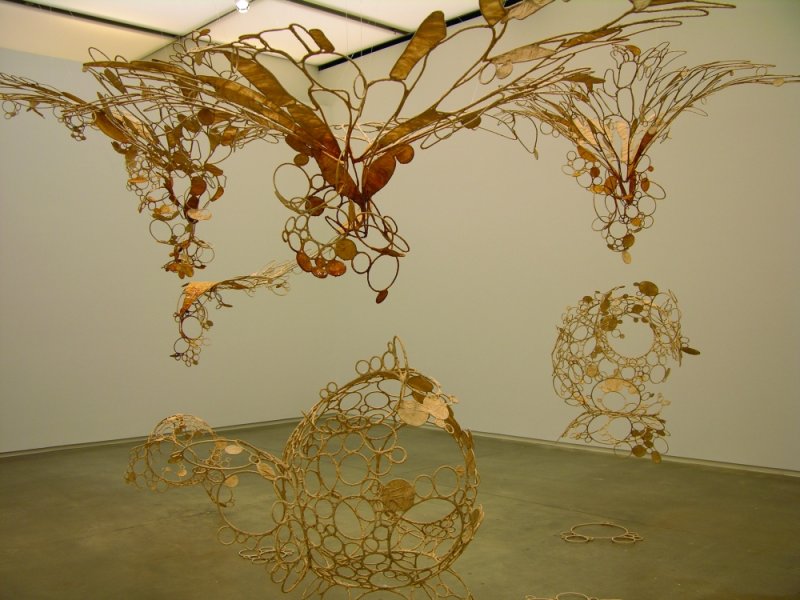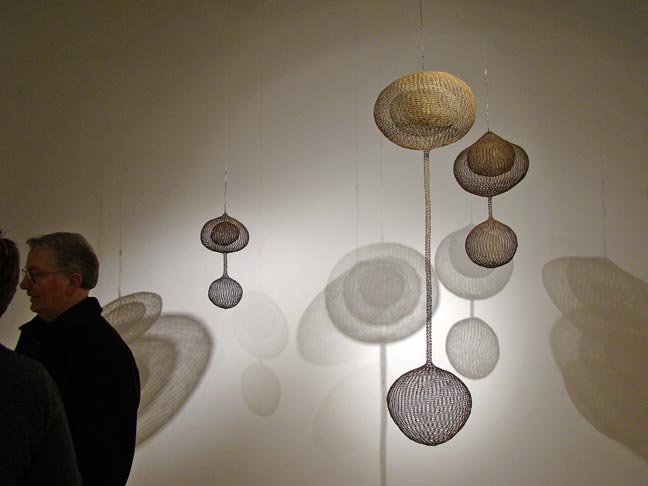
In Design Problem #4 you will learn how to use line as the primary design element to create a 3-dimensional form. You've been provided with a spool of steel wire and a light wire. This summer, you'll create an abstract with a lot of movement. You can wrap the wires or solder the wire, but don't glue it (it will just pop off). when you return to school we will be using hand-made paper pulp as a sculpting material. Your wire sculpture will be coated, covered or dipped into the pulp to create texture and/or pattern.
In this example to the left, you'll see the artist has used wire to make long loops that hang on the wall. She then covered each of the wires with pulp that is dyed pink. The piece ends up looking very fleshy, or skin-like. The variation in pinks add to this effect. I suspect that the wires were dipped into a vat of pink paper pulp to achieve the texture (check out this short video on paper making in Nepal http://www.youtube.com/watch?v=TLFJ3sWnxIo&feature=related)
This is an interesting work, but the piece would be much more dynamic if it were a piece in the round, a sculpture you can walk around.
The piece below looks very different than the previous piece. The artist in this piece use wire to make 3-dimensional shapes, almost petal-like. He then attached the "petals" together. Once the form was constructed, he then wrapped

Ranjani Shettar

Ruth Azawa- made the work above. She crochets or knits wire into formal/symmetrical
sculptures that often hang from the ceiling on invisible wires.

this artist dipped individual wires into wax. you may want to experiment with wax on your
sculpture to see what it does.

this is a functional sculpture. you might want to think about turning the sculpture into a
functional object. The sculpture below is like a nest of colored sticks. if you want to create
a nest-like sculpture with your wire, where each wire "twig" is a different color, then sculpt
the "twigs" and then we will assemble after we put pulp on the wire.

 This elegant sculpture uses thin sheets of hand made paper to
This elegant sculpture uses thin sheets of hand made paper to define positive space. Notice how the artist has moved the eye around the sculpture.

You might want to create a free standing sculpture instead of a hanging sculpture.
Can we use a metal coat hanger to hang the piece from? (like a mobile?) if we can... can we use the hanger as the start and the wire is connected to it or would you want us to use string to separate the hanger from the wire?
ReplyDelete